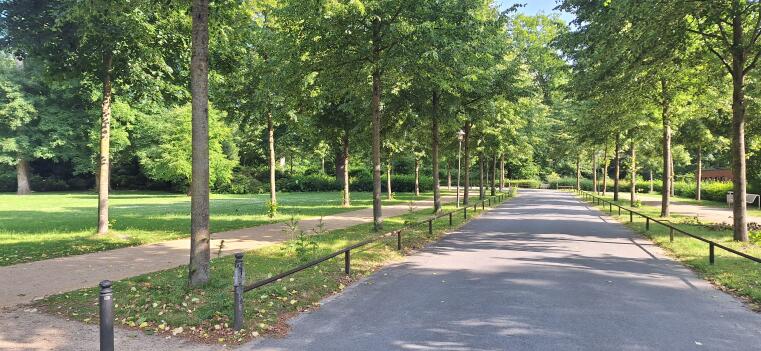
The Wild Lime Tree project
In January 2007, Hurricane Kyrill swept across Germany. It uprooted numerous trees and caused extensive damage to the natural environment. The promenade in front of the University of Münster's main building and the adjacent Schlossgarten were also severely affected.
In order to reforest the tree population behind the Schloss, the University of Münster launched the ‘Wilde Linde’ (Wild Lime Tree) project: committed citizens sponsored one or more trees. This enabled around 150 lime trees to be replanted.
Signs with engravings
At the foot of the lime trees are signs with individual engravings by the sponsors. They combine personal commitment with public engagement and sustainability.
Due to weather conditions, many of the signs have now faded. We have created this website to preserve the personal dedications in the long term and keep them legible. It is also important to the University to make the history of the Schlossgarten accessible to the public. As part of a garden monument, the lime trees play an important role in this. In addition to general information about the Wild Lime Tree project, you will find a map of the tree rows and the inscriptions on the signs here on the website.
Sponsorships
Currently, we are not offering new sponsorships within the Wild Lime Tree project. However, in the Botanical Garden, you can find numerous opportunities to take on a plant sponsorship.
Plant Sponsorships in the Botanical Garden
Further tree projects in the Schlossgarten
In addition to the ‘Wilde Linde’, visitors to the Schlossgarten can also discover the ‘Kleine Baumschule’ and our Tree Discovery Trail!
The ‘Kleine Baumschule’ presents 16 trees from the Schlossgarten with a brief description of their special features: from external characteristics to distribution and use to myths and stories.
https://www.uni-muenster.de/KleineBaumschule/ (German language only)
The eight stops of the tree adventure trail explain the topic ‘tree ecosystem’. They cover woodpeckers, deadwood and fungi, insects, wood use, bats and tree species. Visitors can test their knowledge with questions. An audio guide is available for children.
https://www.uni-muenster.de/Baumerlebnispfad/en/index.html
